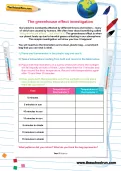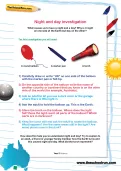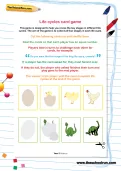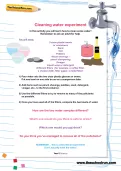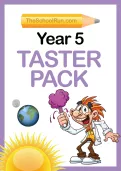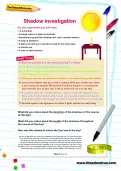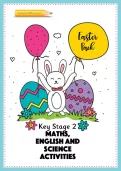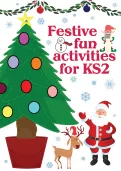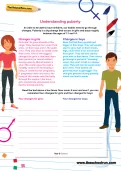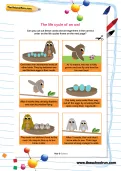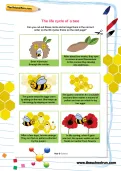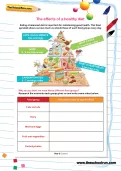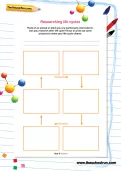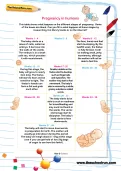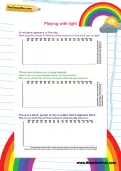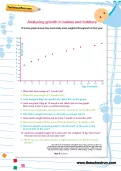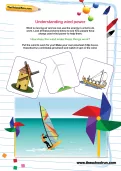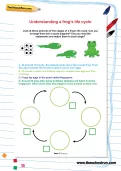Find out what your child will learn in Year 5 English, maths and science, try out a few learning activities and read our top tips about how to support their learning and development in our free, downloadable Year 5 Taster Pack.
or
Register to add to your saved resources
An investigation and activity sheet to help Y5 children consolidate their knowledge about the Earth and how it moves in space.
or
Register to add to your saved resources
Already a subscriber? to view this content.
A Year 5 science investigation into shadows and what they can tell us about the position of the Sun in the sky.
or
Register to add to your saved resources
Already a subscriber? to view this content.
Find out about the Earth's moon and then answer some true-or-false questions in this Year 5 science worksheet.
or
Register to add to your saved resources
Already a subscriber? to view this content.
Get ready for some egg-y, chocolate-y, Easter-y fun! The KS2 Easter activities pack has plenty of themed maths, English and science learning opportunities to keep kids busy and learning over the spring break.
or
Register to add to your saved resources
Already a subscriber? to view this content.
With Christmas lists to write, present-delivery schedules to work out, Grotto problems to solve and light and dark experiments to try this bumper pack of festive learning activities will keep your child engaged over the Christmas break.
or
Register to add to your saved resources
Already a subscriber? to view this content.
In order to be able to have children, our bodies need to go through changes. Puberty is a big change that occurs in girls and boys roughly between the ages of 11 and 14. Read this text a few times. Now cover it over and see if you can remember four changes for girls and four changes for boys
or
Register to add to your saved resources
Already a subscriber? to view this content.
Can you cut out these cards and arrange them in the correct order on the life cycles frame?
or
Register to add to your saved resources
Already a subscriber? to view this content.
Can you cut out these cards and arrange them in the correct order on the life cycles frame?
or
Register to add to your saved resources
Already a subscriber? to view this content.
Can you cut out these cards and arrange them in the correct order on the life cycles frame on the next page?
or
Register to add to your saved resources
Already a subscriber? to view this content.
Can you cut out these cards and arrange them in the correct order on the life cycles frame?
or
Register to add to your saved resources
Already a subscriber? to view this content.
Eating a balanced diet is important for maintaining good health. This food pyramid shows us how much we should have of each food group every day. Why do you think we need these different food groups? Can you do some research into the nutrients each group gives us.
or
Register to add to your saved resources
Already a subscriber? to view this content.
Think of an animal or plant you are particularly interested in. Can you research their life cycle? Draw or print out some pictures to make your life cycle clearer.
or
Register to add to your saved resources
Already a subscriber? to view this content.
Jane Goodall is a world-famous primatologist who has made lots of important scientific discoveries about chimpanzees and how they behave. Can you do some research and find the answers to these questions about her life?
or
Register to add to your saved resources
This table shows what happens in the different stages of pregnancy. Some of the boxes are blank. Can you fill in what happens at these stages by researching it in library books or on the internet?
or
Register to add to your saved resources
Already a subscriber? to view this content.
What causes a rainbow to appear in the sky. Why are there colours in soap bubbles? If you put a stick, spoon or toy in water, why does it appears bent. Let's find out!
or
Register to add to your saved resources
Already a subscriber? to view this content.
This line graph shows how much baby Jack weighed throughout his first year. Can you answer the following questions?
or
Register to add to your saved resources
Already a subscriber? to view this content.
Wind is moving air and we can use the energy in wind to do work. Look at these pictures to see how people have always used wind power to help them. How does the wind make these things work? Put the wind to work for you! Make your own pinwheel and watch it spin in the wind.
or
Register to add to your saved resources
Already a subscriber? to view this content.
Pushing and pulling FORCES make things speed up or slow down or change direction or shape. A change in speed, direction or shape always has a CAUSE. Sort the following pictures into forces caused by pushes and forces called by pulls. Then think of your own examples of pushes and pulls as you do things throughout the day.
or
Register to add to your saved resources
Already a subscriber? to view this content.
Look at these pictures of the stages of a frog’s life cycle. Can you arrange them into a cycle diagram? Can you read the statements and match them to each stage?
or
Register to add to your saved resources
Already a subscriber? to view this content.
